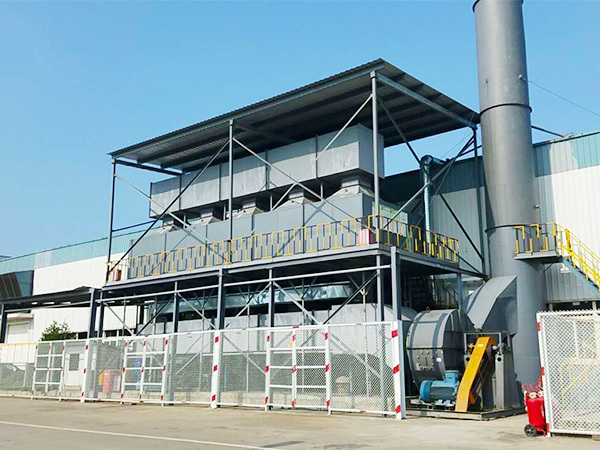Introduction to Catalytic Combustion Equipment
Published Time:
2020-08-04
Combustibles burn under the action of a catalyst. Compared with direct combustion, catalytic combustion has a lower temperature and more complete combustion. The catalysts used in catalytic combustion are multi-component substances of noble metals and metal oxides with a large specific surface area. For example, household catalytic gas stoves loaded with Pd or rare earth compounds can reduce the CO content in the exhaust gas and improve thermal efficiency. An alumina catalyst loaded with 0.2% pt can burn most organic compounds at 500℃, and deodorize and purify them to a chemical shift σ=1 or less. Catalytic combustion is flameless combustion, so it is suitable for occasions with high safety requirements, such as fuel cells using H2 and O2 as raw materials, and hand warmers using gasoline or alcohol as raw materials (the catalyst is Pt-impregnated asbestos). For example, to eliminate NOx smoke from chemical plants, fuel can be added to the smoke, and NOx can be converted into N2 gas through catalytic combustion with supported platinum and palladium catalysts. A combustion method in which combustible substances in harmful gases are decomposed and oxidized at a lower temperature using an appropriate catalyst. The key factor in catalytic combustion is the selection of the catalyst. There are many catalysts to choose from: according to their activity, there are palladium, platinum, rare earth and transition metal oxide catalysts; according to their shape, there are amorphous granular, spherical granular, monolithic honeycomb, mesh, wire felt and porous plate catalysts. The catalyst support is generally alumina and ceramic, in addition to natural zeolite, nickel-chromium wire and stainless steel wire.
Combustibles burn with the aid of a catalyst. Compared to direct combustion, catalytic combustion occurs at a lower temperature and is more complete. Catalysts used in catalytic combustion are multi-component substances of noble metals and metal oxides with a large specific surface area. For example, household catalytic gas stoves loaded with Pd or rare earth compounds can reduce the CO content in exhaust gas and improve thermal efficiency. An alumina catalyst loaded with 0.2% pt can burn most organic compounds at 500℃, deodorizing and purifying them to a chemical shift σ<1. Catalytic combustion is flameless combustion, so it is suitable for occasions with high safety requirements, such as fuel cells using H2 and O2 as raw materials, and hand warmers using gasoline or alcohol as raw materials (the catalyst is Pt-impregnated asbestos). To eliminate NOx fumes from chemical plants, fuel can be added to the fumes, and NOx can be converted to N2 gas through catalytic combustion using supported platinum and palladium catalysts.
A combustion method that uses a suitable catalyst to decompose and oxidize combustible substances in harmful gases at a lower temperature.
The key factor in catalytic combustion is the selection of the catalyst. There are many catalysts to choose from: according to their activity, there are palladium, platinum, rare earth and transition metal oxide catalysts; according to their shape, there are amorphous granular, spherical granular, monolithic honeycomb, mesh, fiber felt and porous plate catalysts. The catalyst support is generally alumina and ceramic, in addition to natural zeolite, nickel-chromium wire and stainless steel wire.

Keywords:
Catalysis, combustion, catalyst
Recommended News
Tiansheng Environmental Protection Equipment
Contact Person: Manager Liu
Tel: +86-18663781444
WhatsApp: +86-18660773816
Address: Diaozhen Industrial Park, Zhangqiu District, Jinan City


Copyright © 2023 Jinan Tiansheng Environmental Protection Equipment Co., Ltd.



